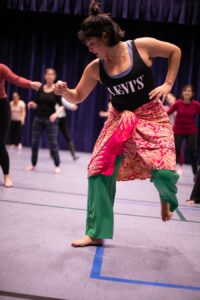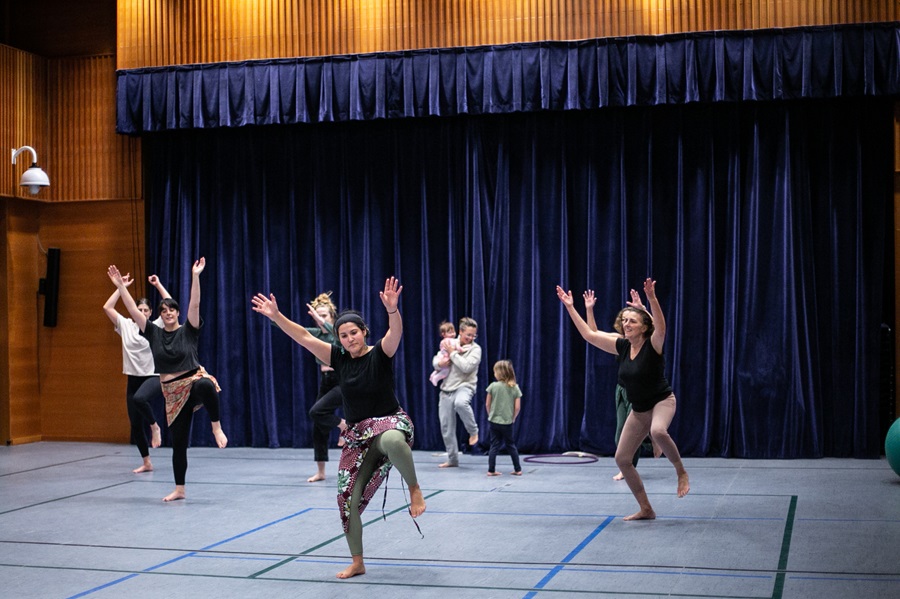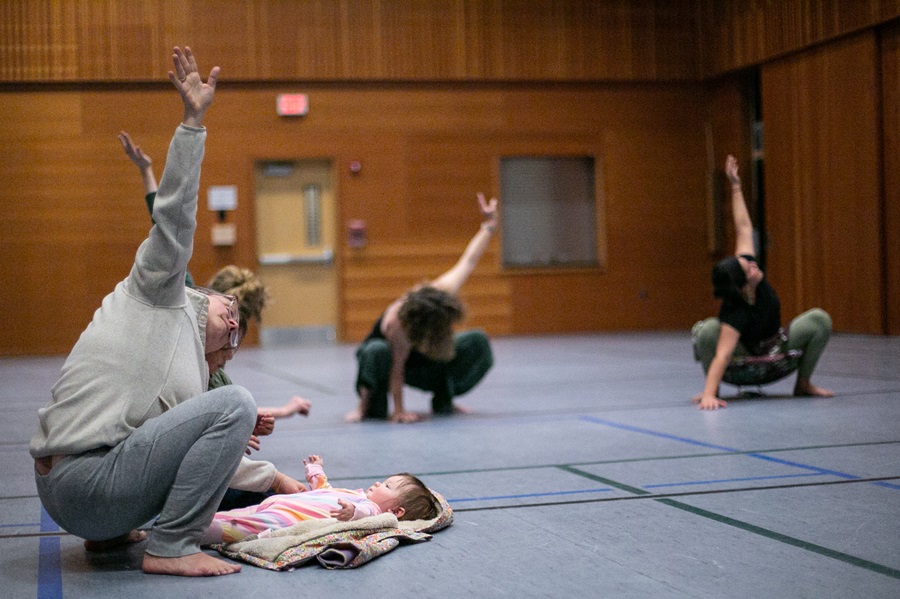Paulette Durazo started taking dance lessons when she was five years old, and since then her explorations have spanned dance traditions from around the world. She grew up in a big city, Tijuana, in the Mexican state of Baja California. She studied ballet and tap first. A couple of years later, when her aunt opened a gym with an adjoining dance studio, Durazo learned jazz. She practiced that until she was 17, when she started hip-hop. “I’ve always wanted to dance everything,” Durazo says.
But it wasn’t until she was in college at the Universidad Autónoma de Baja California, where she studied oceanography — Durazo is a rescue assistant on the Marine Animal Entanglement Response Team at the Center for Coastal Studies — that she encountered the kind of movement she now leads at the Truro Community Center. She was at a campus event when she saw students from a West African dance class performing. “I remember feeling the energy,” Durazo says. “There was something in me that said I needed to try it.”

Durazo signed up for the class and felt an immediate connection to the dance style, she says. Its focus is on how the body moves, rather than aesthetics, and allows for personal interpretation. She began traveling to dance festivals to see more and attending workshops with dancers trained in Africa.
When she moved to Truro in 2019, Durazo didn’t leave her passion for dance behind. And since 2021, she’s been leading classes inspired by West African traditions. Right now, it’s a late fall and winter thing, she says. On a Wednesday evening — the class meets weekly, from 5 to 6 p.m. — Durazo stands in front of a group of women of all ages. Some are regulars while others are dropping in for the first time.
Molly Tsongas, from Chatham, holds her infant Demitria, while her daughter Mae plays with a hula hoop nearby. That reflects one of Durazo’s hopes for the class: “I wanted to make it accessible for people who don’t know where to leave the kids.” Over the years, she has seen such open-to-all-generations scenes at workshops around the world, with “babies sleeping next to the drums, not bothered,” she says. “Later, you’d see them growing up and coming to the classes.”
Two weeks ago, Durazo went to New York City to attend a weekend workshop with the Alvin Ailey American Dance Theater. It included classes in African dance from many regions. She took a class on Afro-Cuban dance as well as others focused on dance from Senegal, Mali, and the Ivory Coast.

Her class is not based on a single West African dance style. Instead, it’s inspired by all of them. “I incorporate all the steps and knowledge that I’ve gathered through the years,” she says. Her students learn simple steps to syncopated beats — two arms raised here, a foot forward, a foot backward — Durazo assists them by singing the beats aloud as she leads the class across the floor, her movements exuberant yet precise.
Her music choices also reflect a wide range of cultures. While a traditional West African dance class would usually include live music played on drums like the djembe or the dundun, Durazo uses her mobile phone and a speaker. Her playlist has music from everywhere, she says. There’s pop, instrumental jazz, electronic music, all by musicians of African heritage. The songs’ uniting factor is a danceable beat.
West African dance forms can involve complicated technique, Durazo says. But that’s not the focus in her class. “It’s more of an avenue for people to have fun, feel comfortable with their bodies, and find ways to move,” she says.
Alicia Carroll, from Orleans, was one of the first students to sign up for Durazo’s class and one of the more confident dancers in the room. She says Durazo’s energy is what has kept her returning for three years and counting. “She has got so much enthusiasm and love that she wants to share with everybody,” says Carroll. Other students echo that sentiment.

Durazo has enjoyed watching the group evolve over time. “When they first started, they were afraid of moving,” she says. “They told me, ‘I can’t do it. I’m so bad. I don’t know what I’m doing.’ ” Gradually, the students started to understand the rhythms. “They don’t think too much — it becomes very natural for them,” says Durazo.
Teaching keeps Durazo connected to her identity as a dancer and learner. “I used to train every day,” she says. Now, the only way for her to continue training is by going to New York or Boston. But when she prepares for each class that she teaches, she says, “my body remembers the things I used to do. When you teach, you’re teaching yourself.”
At the end of the class, the group settles into a circle for some stretching to soft music. Durazo is in the happy baby pose, lying on her back with her feet in the air. Demitria, the baby, follows along. An hour has flown by in what feels to a dancer like half that time.
“It’s just so much fun,” says Sophia Feuerhake from North Truro. “I’m learning how to dance, which I never thought possible.”
That suits Durazo. “I want people to feel good with their bodies and their movements,” she says. “My purpose is not to build ballerinas.”



